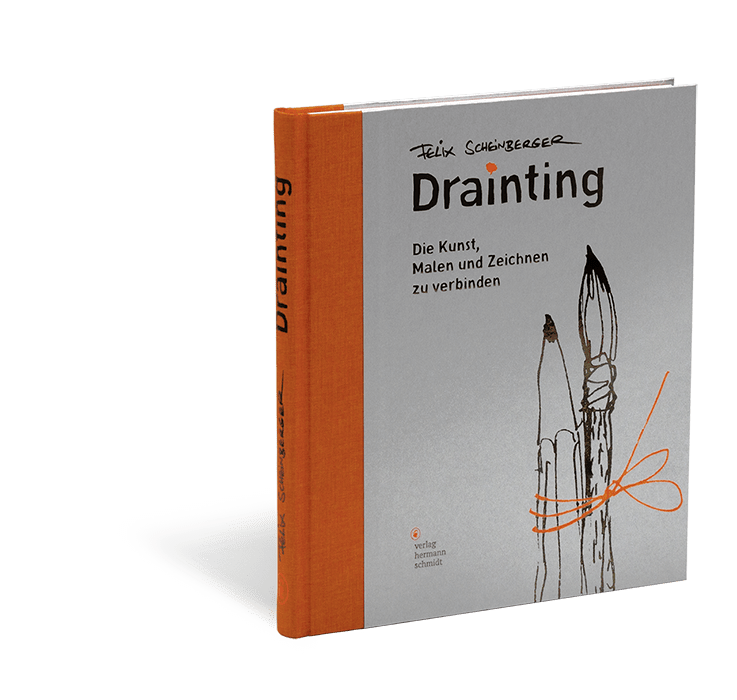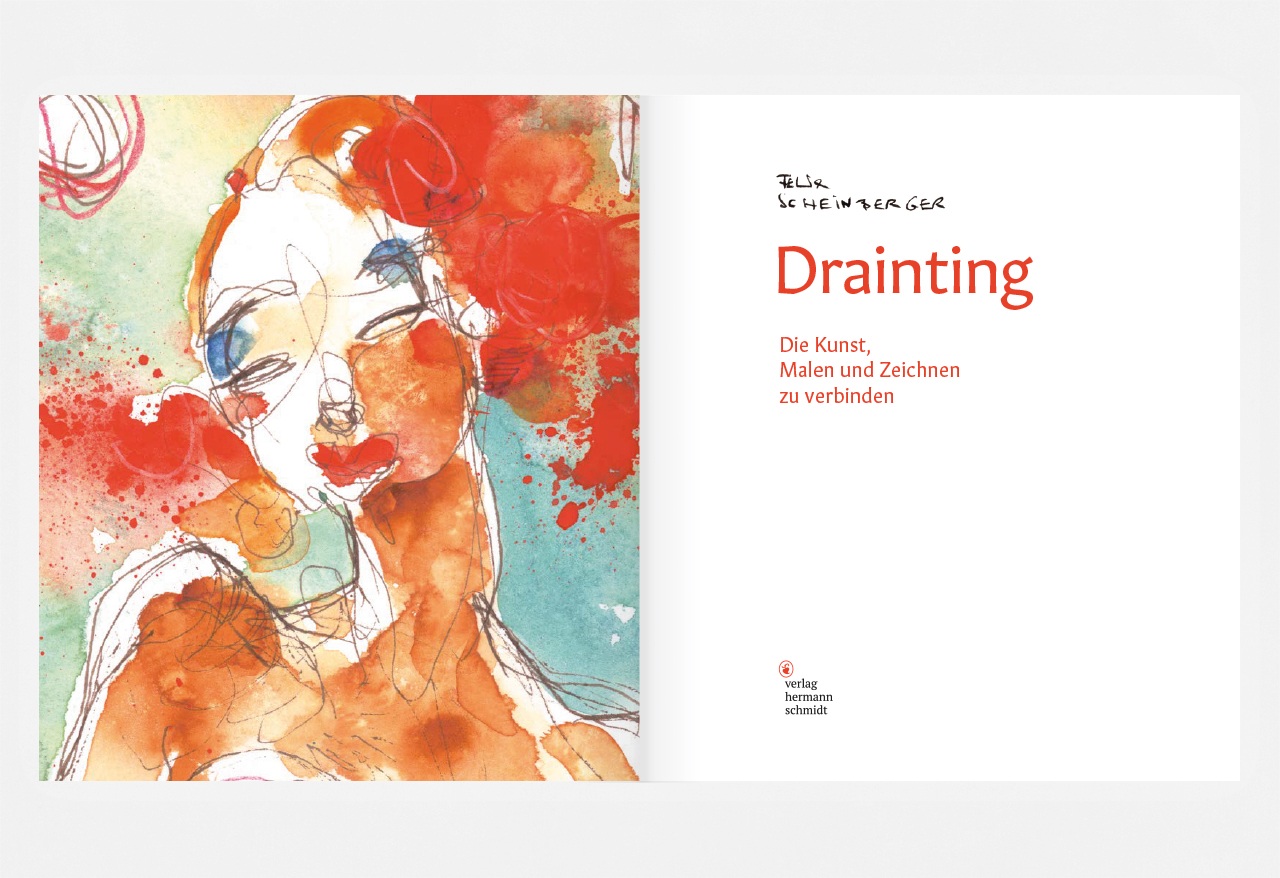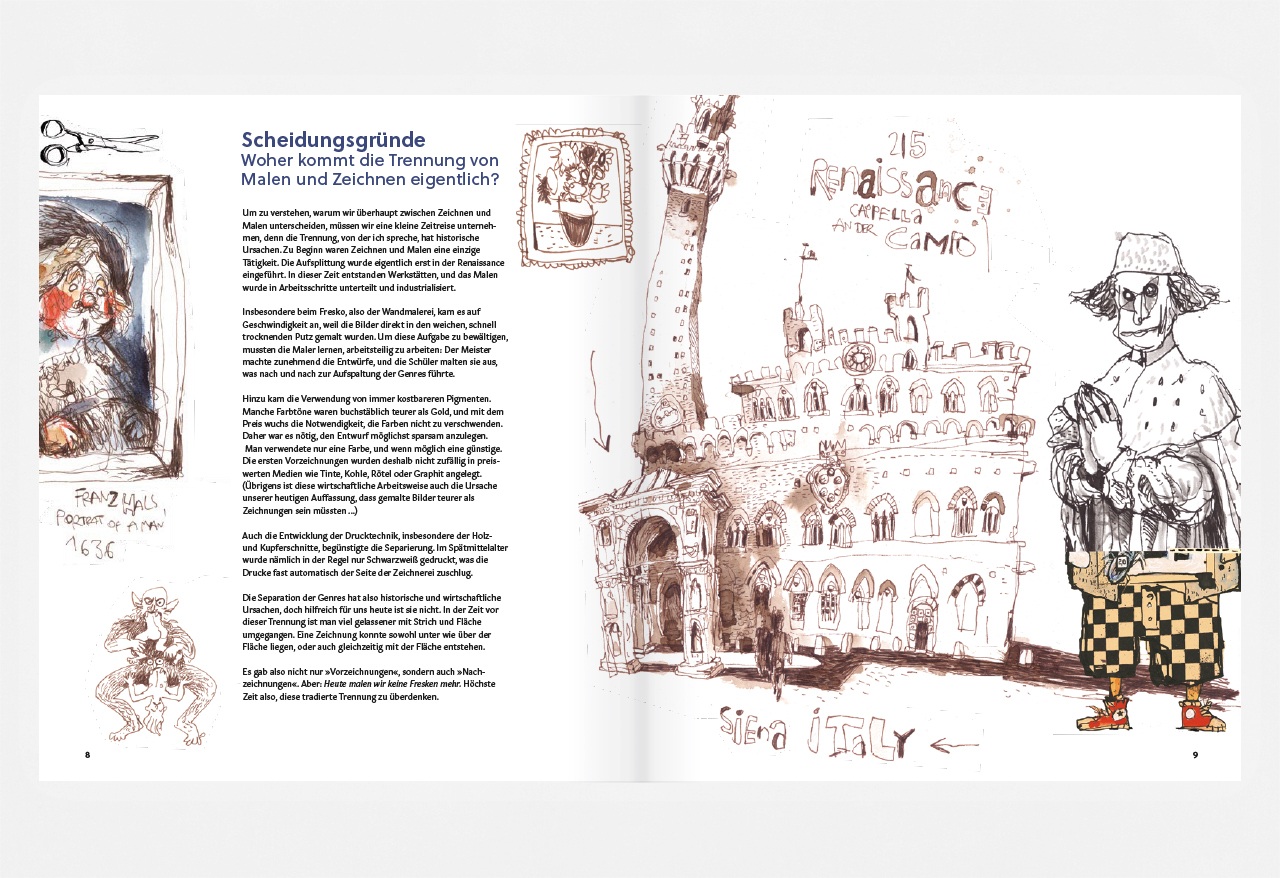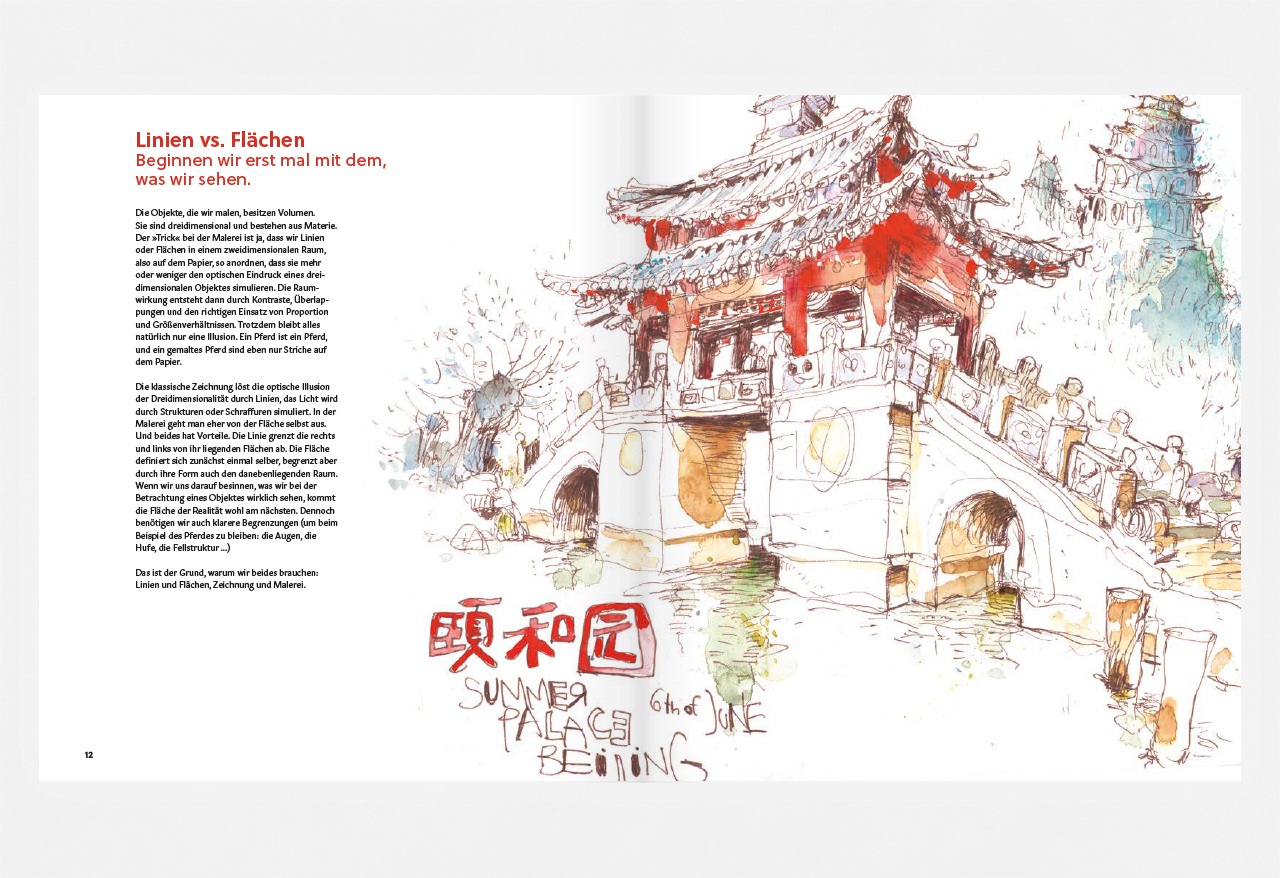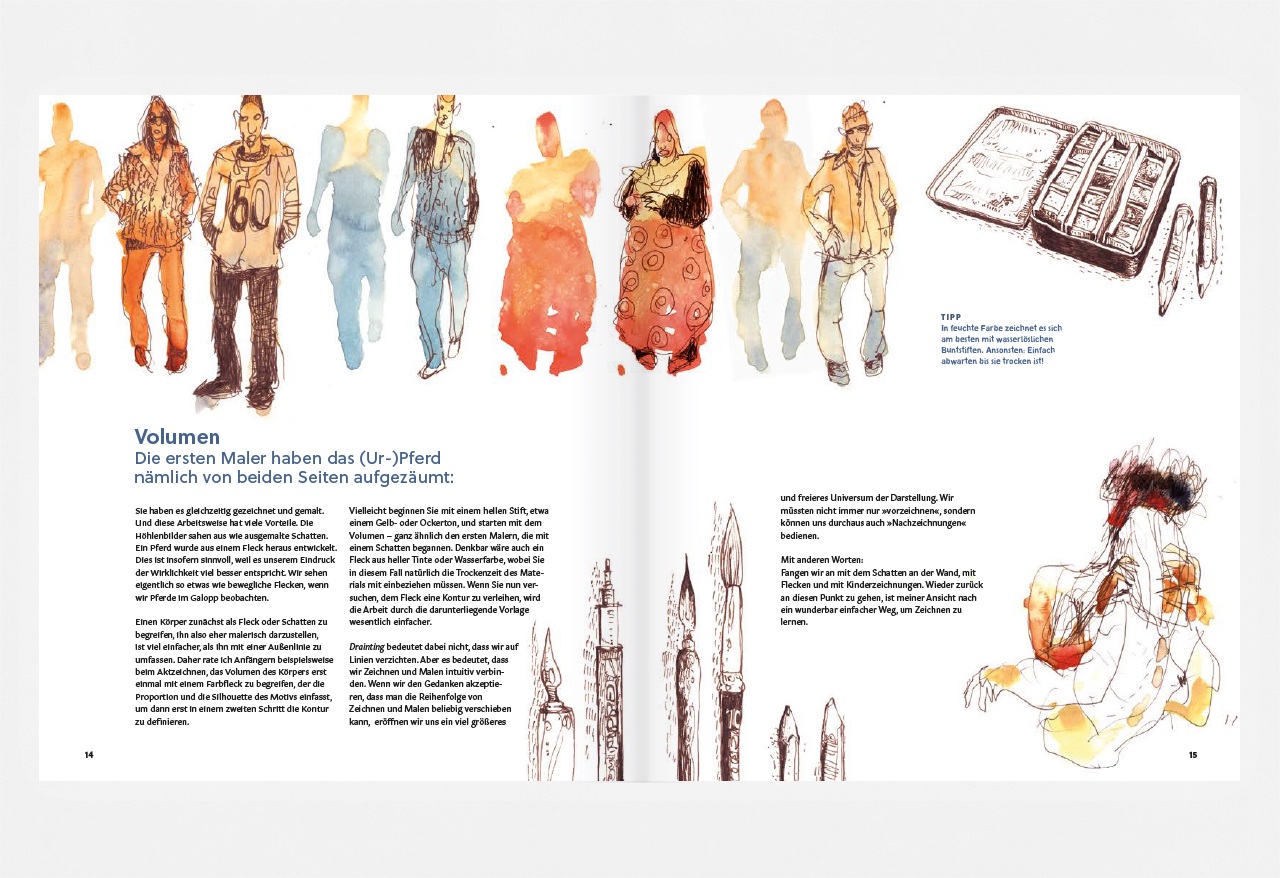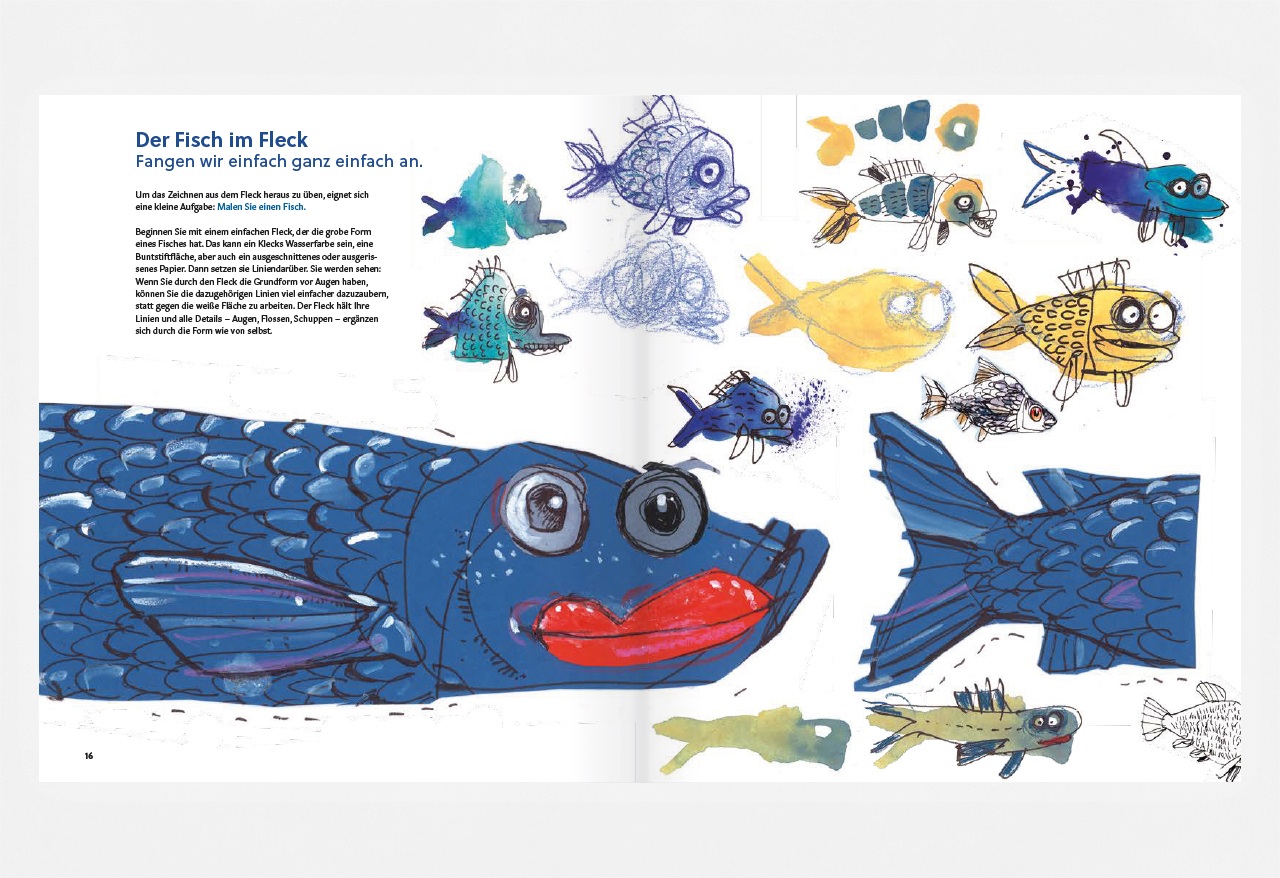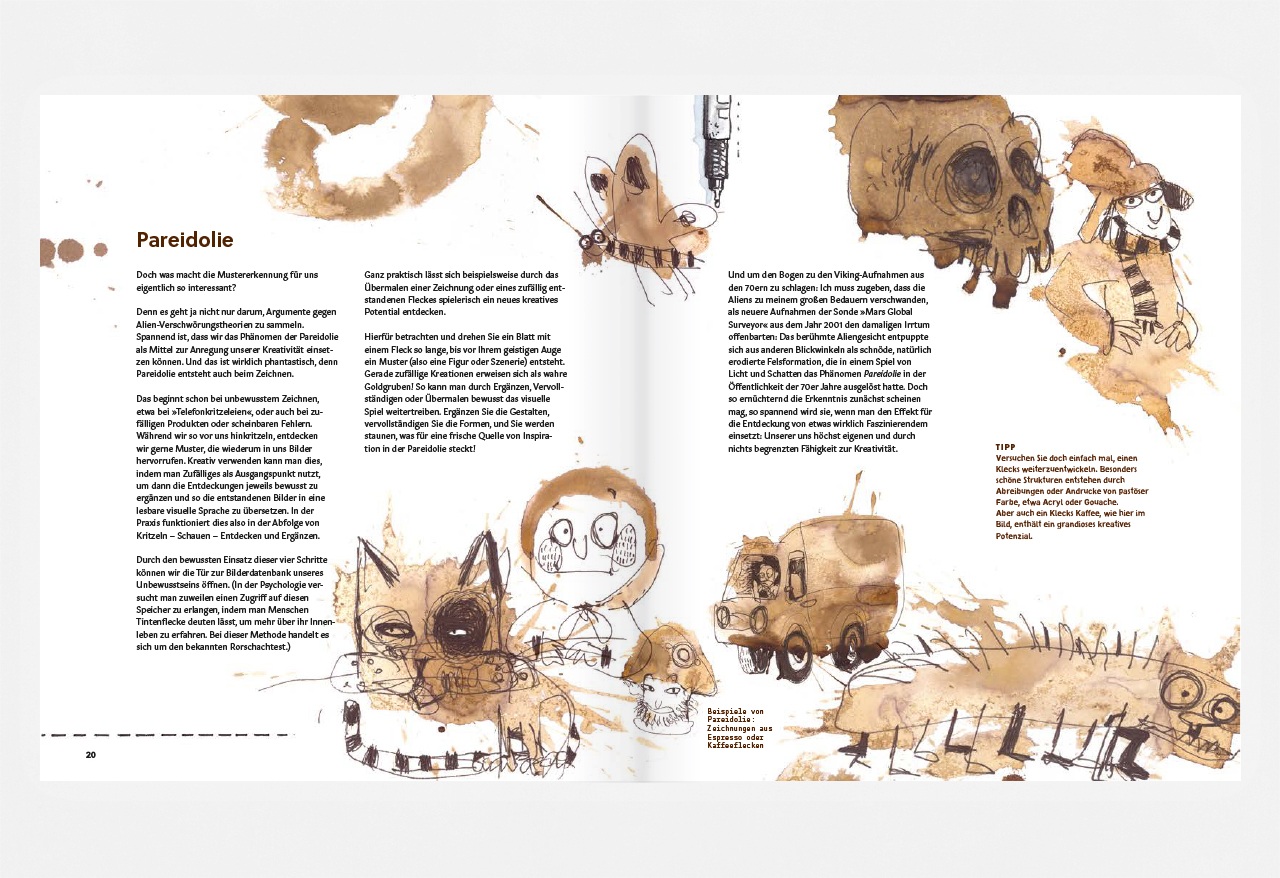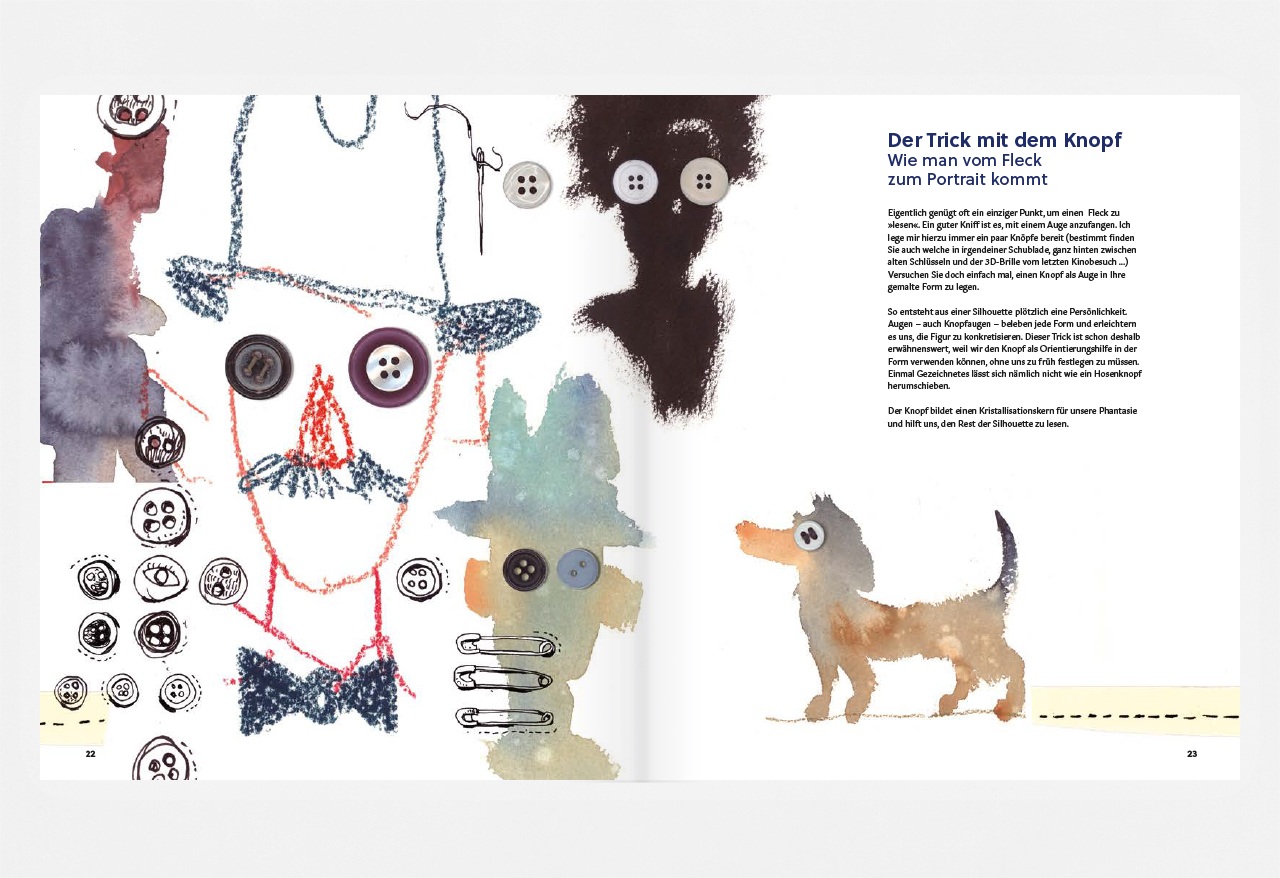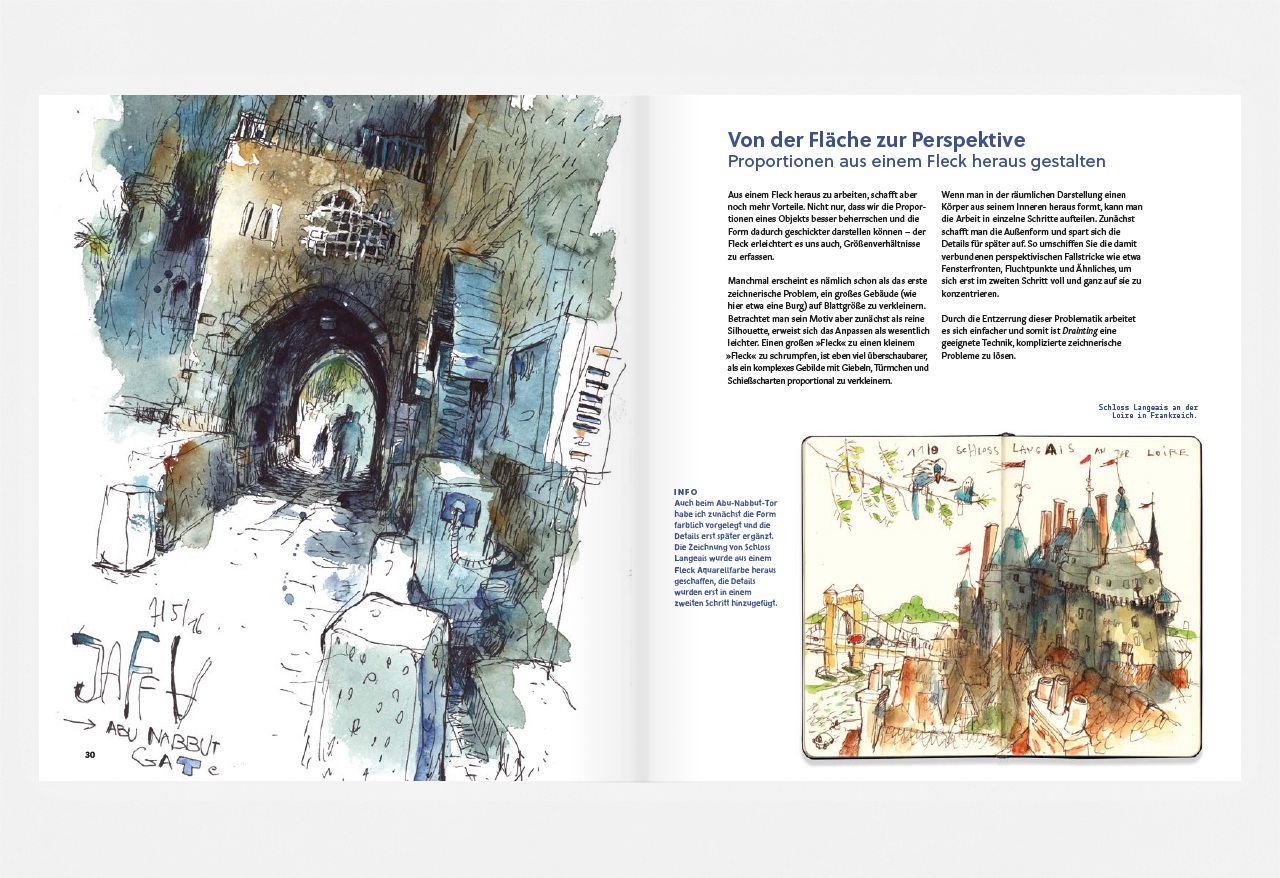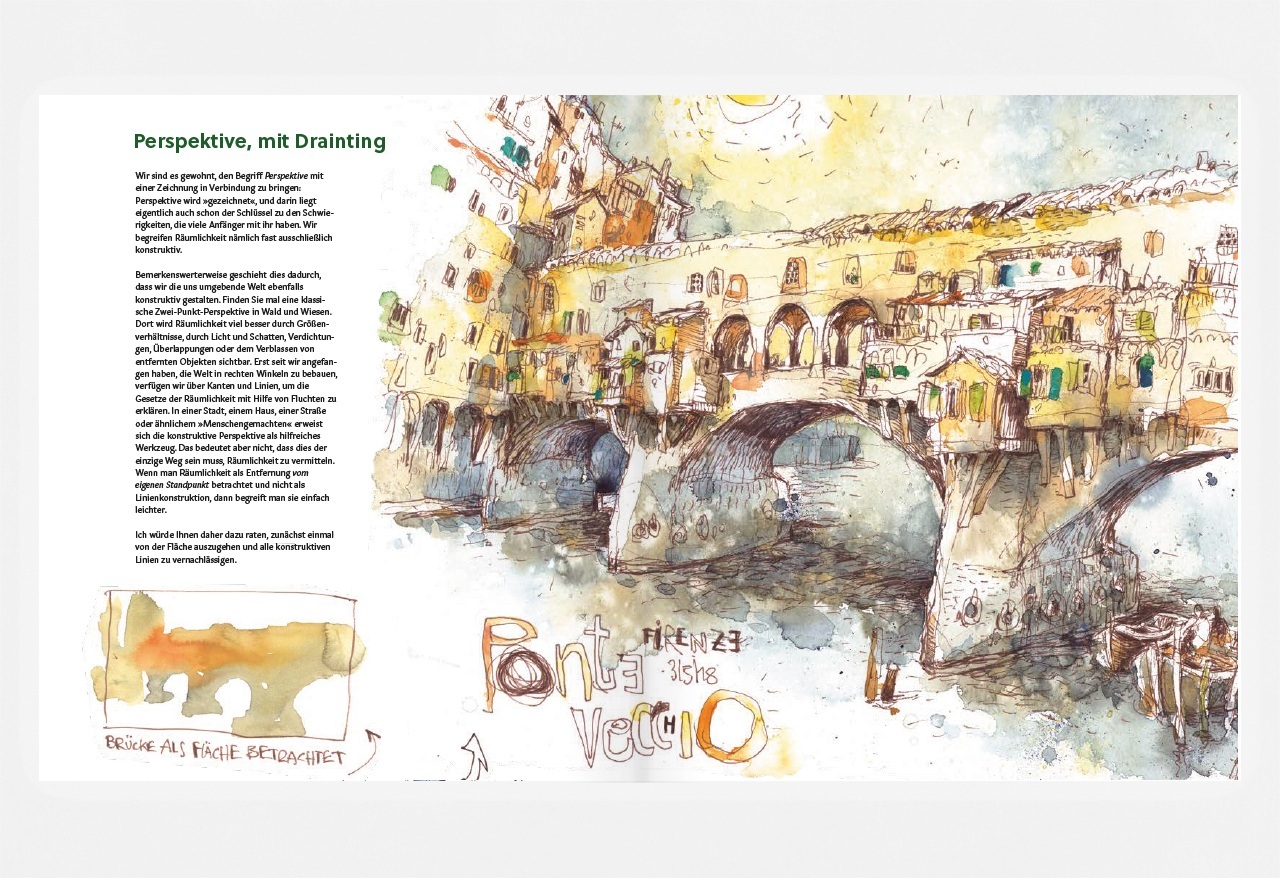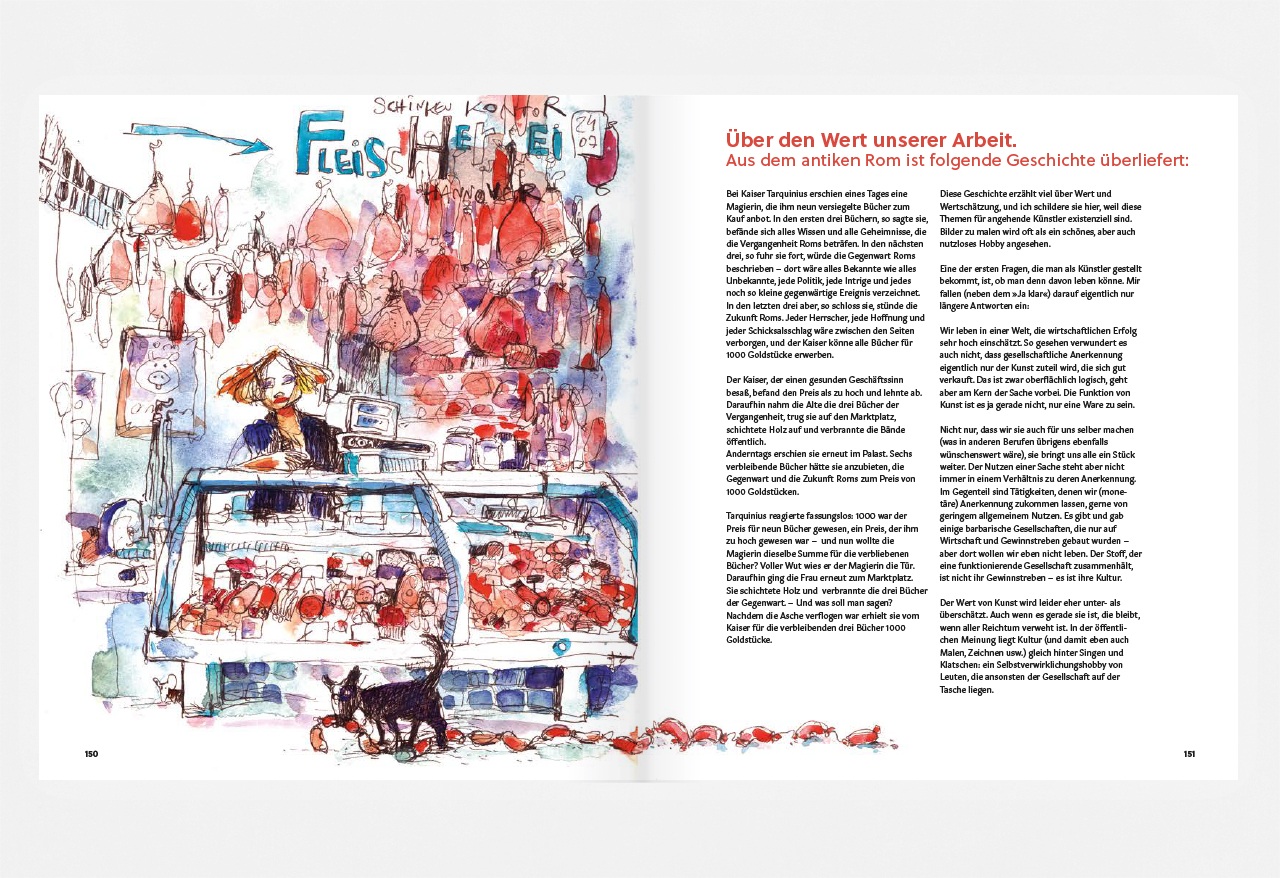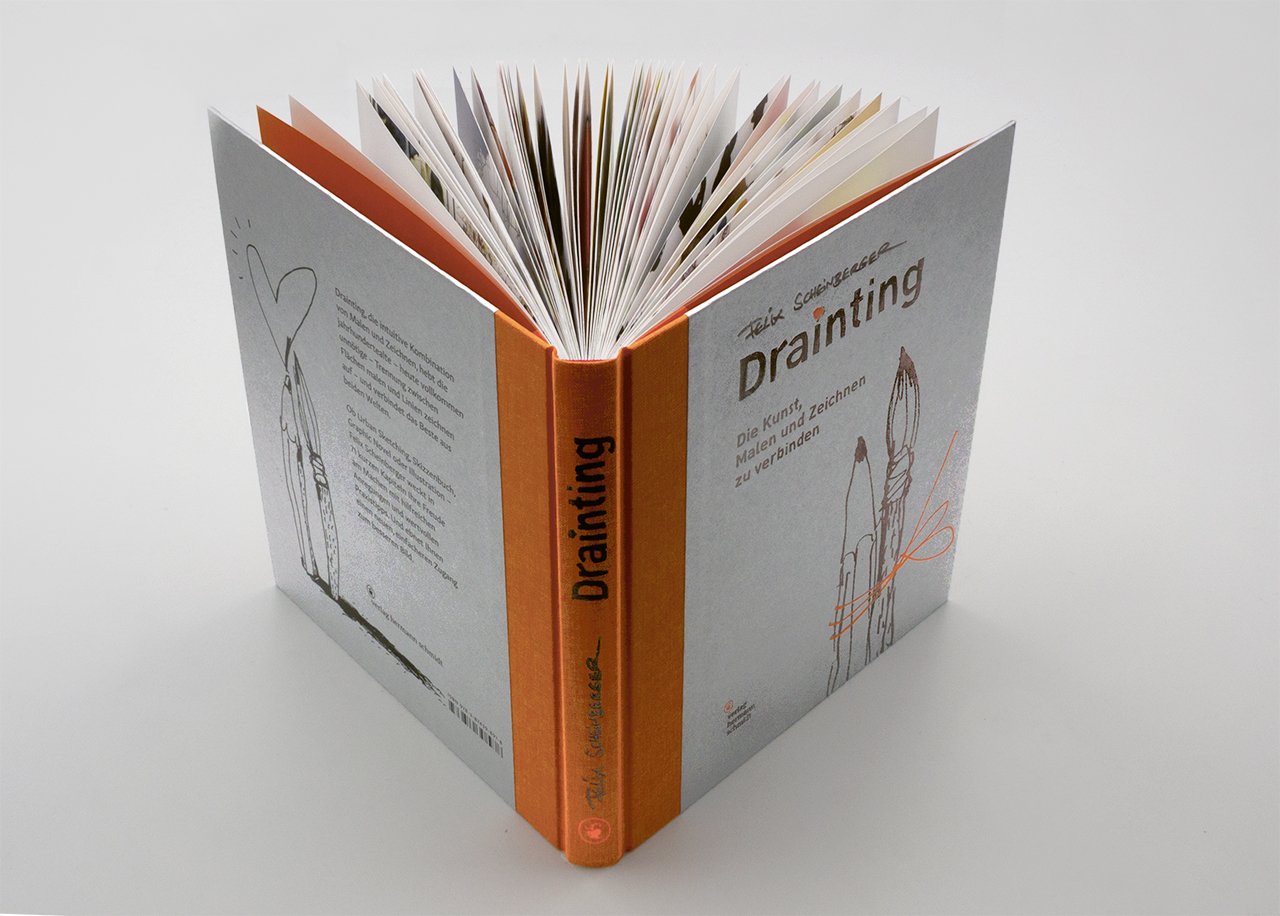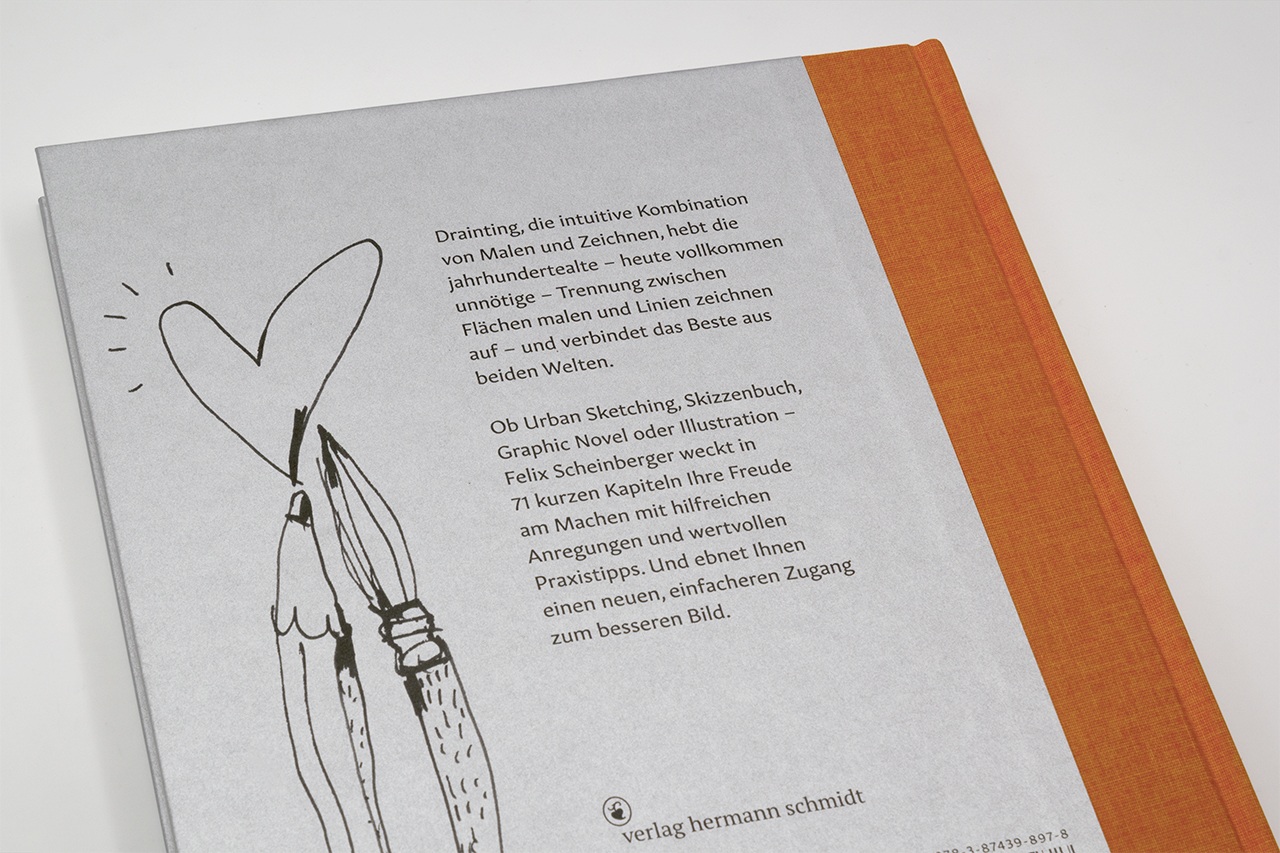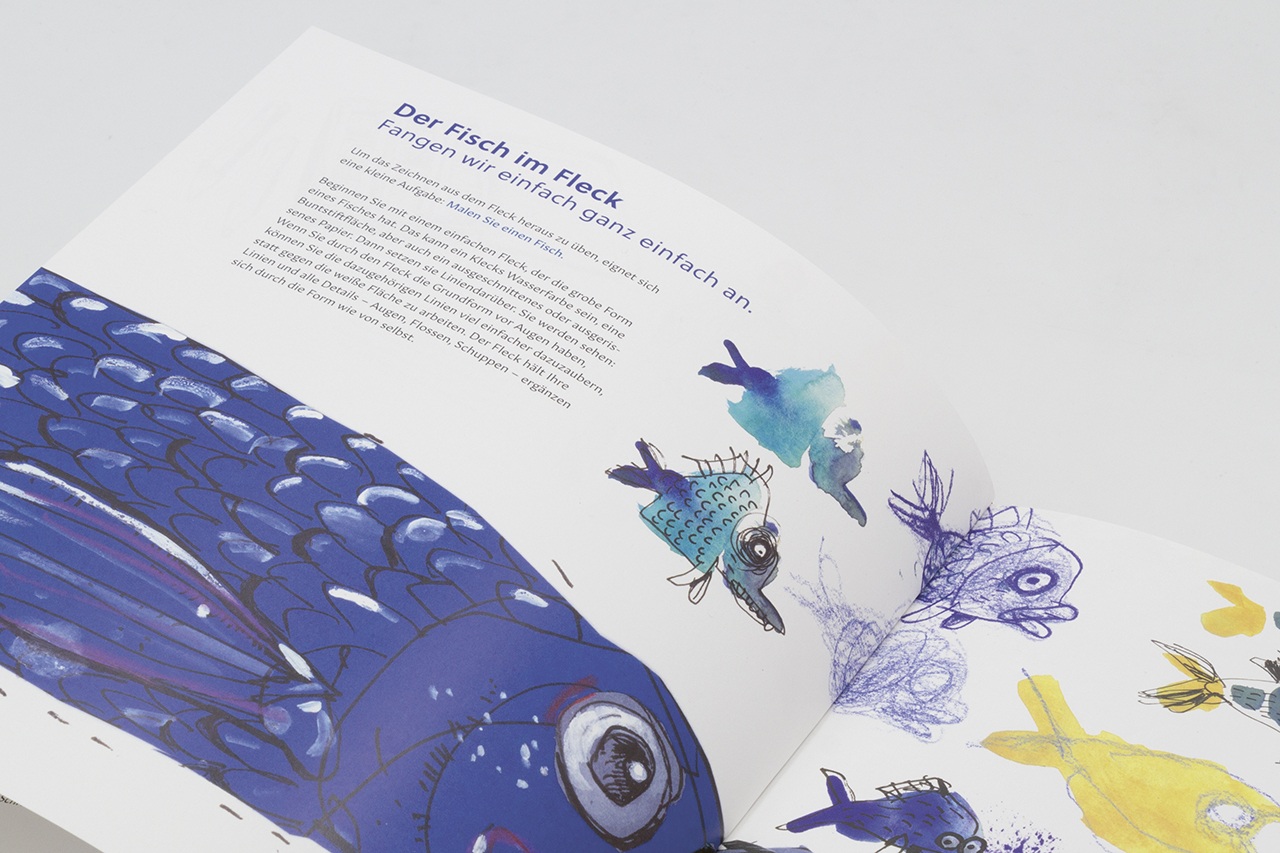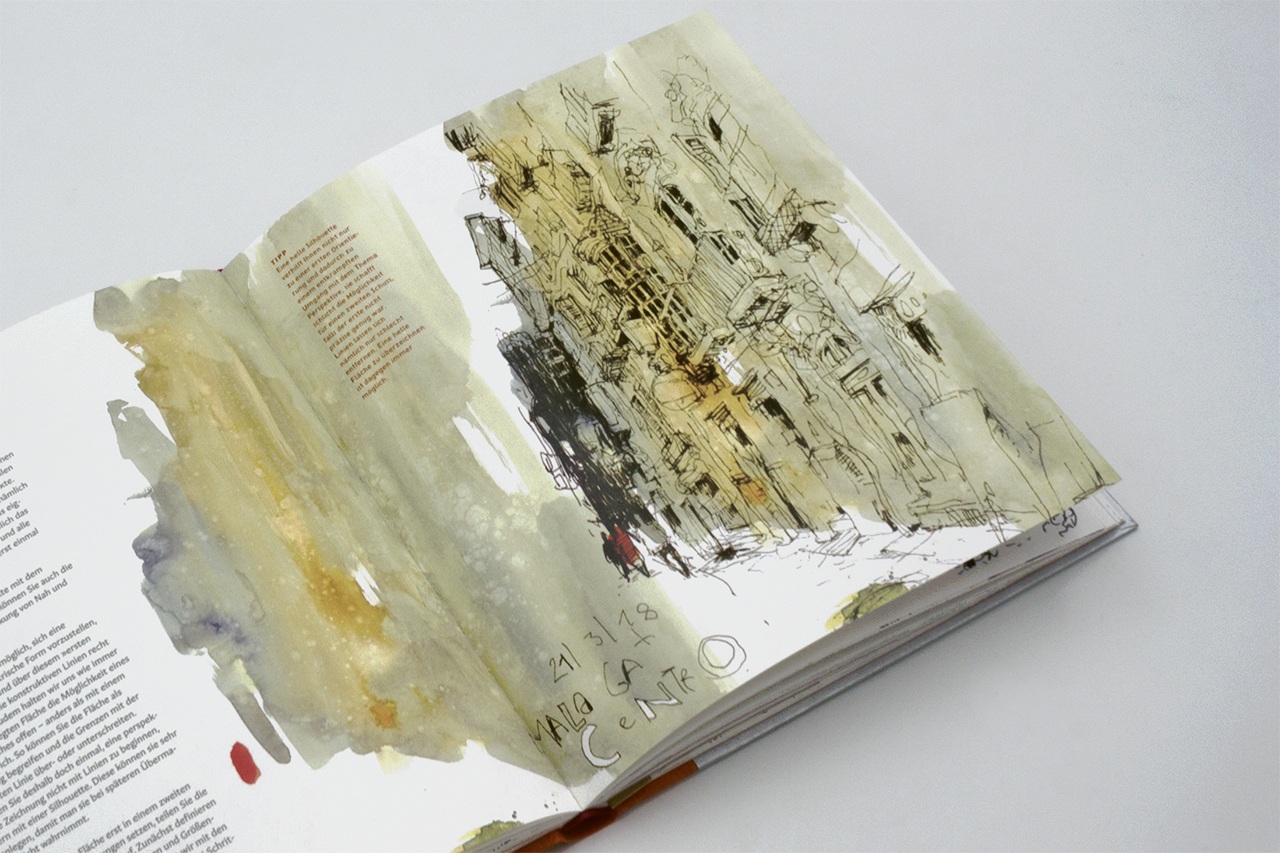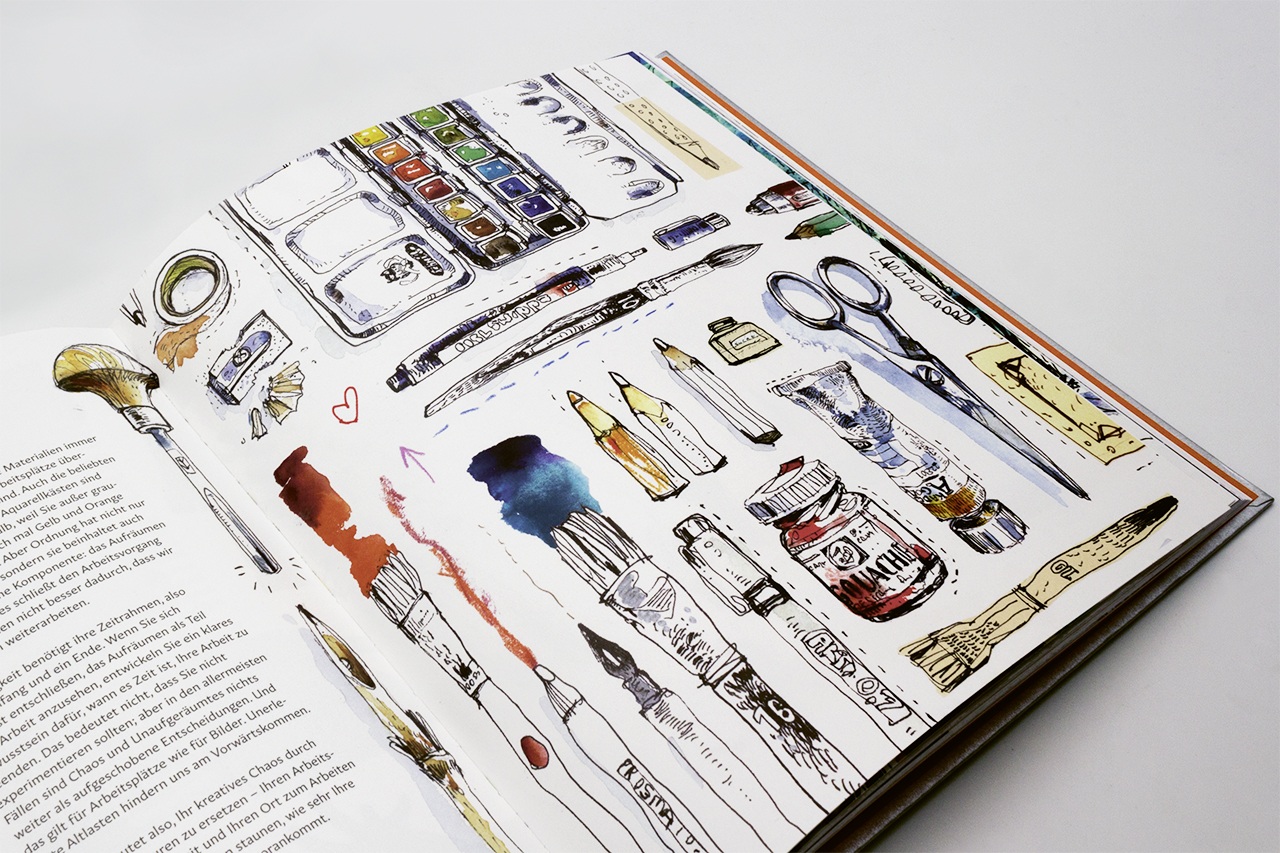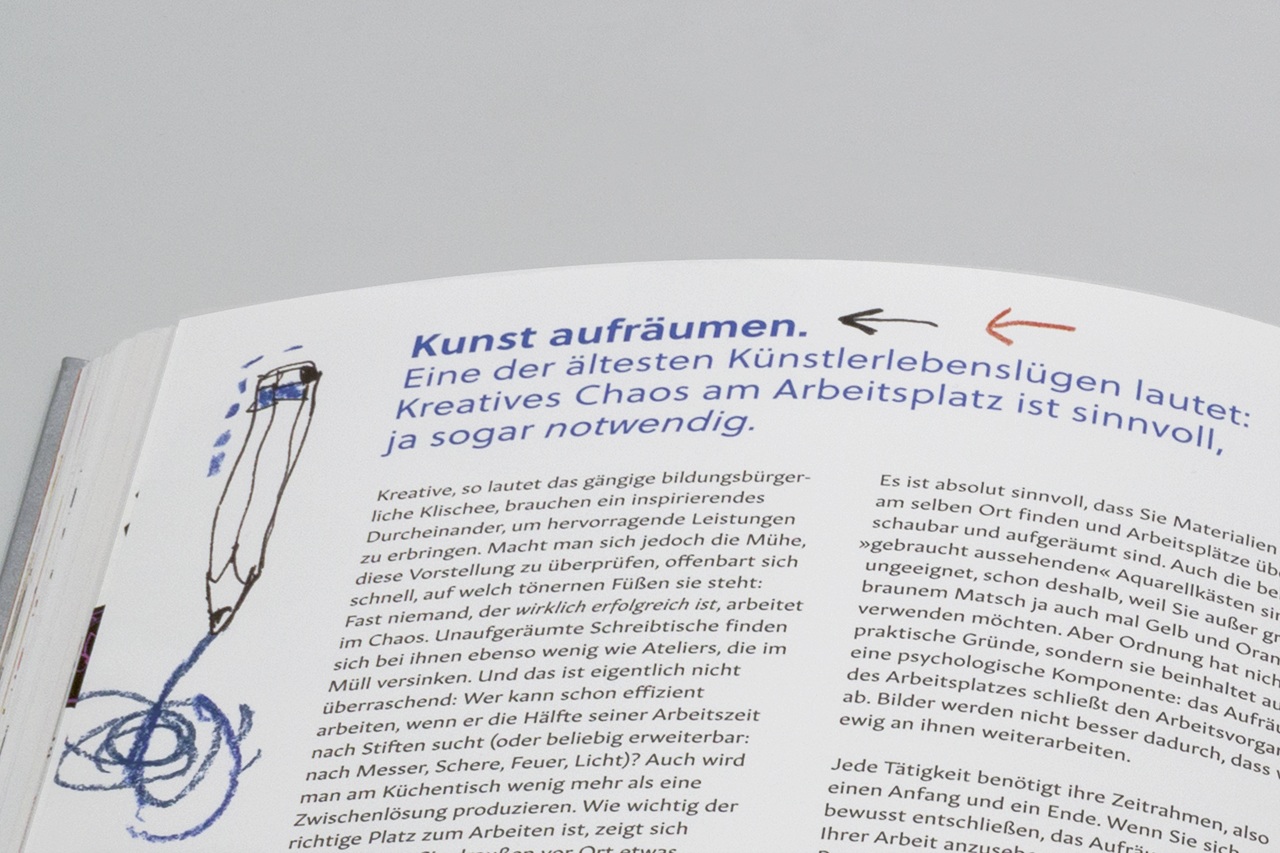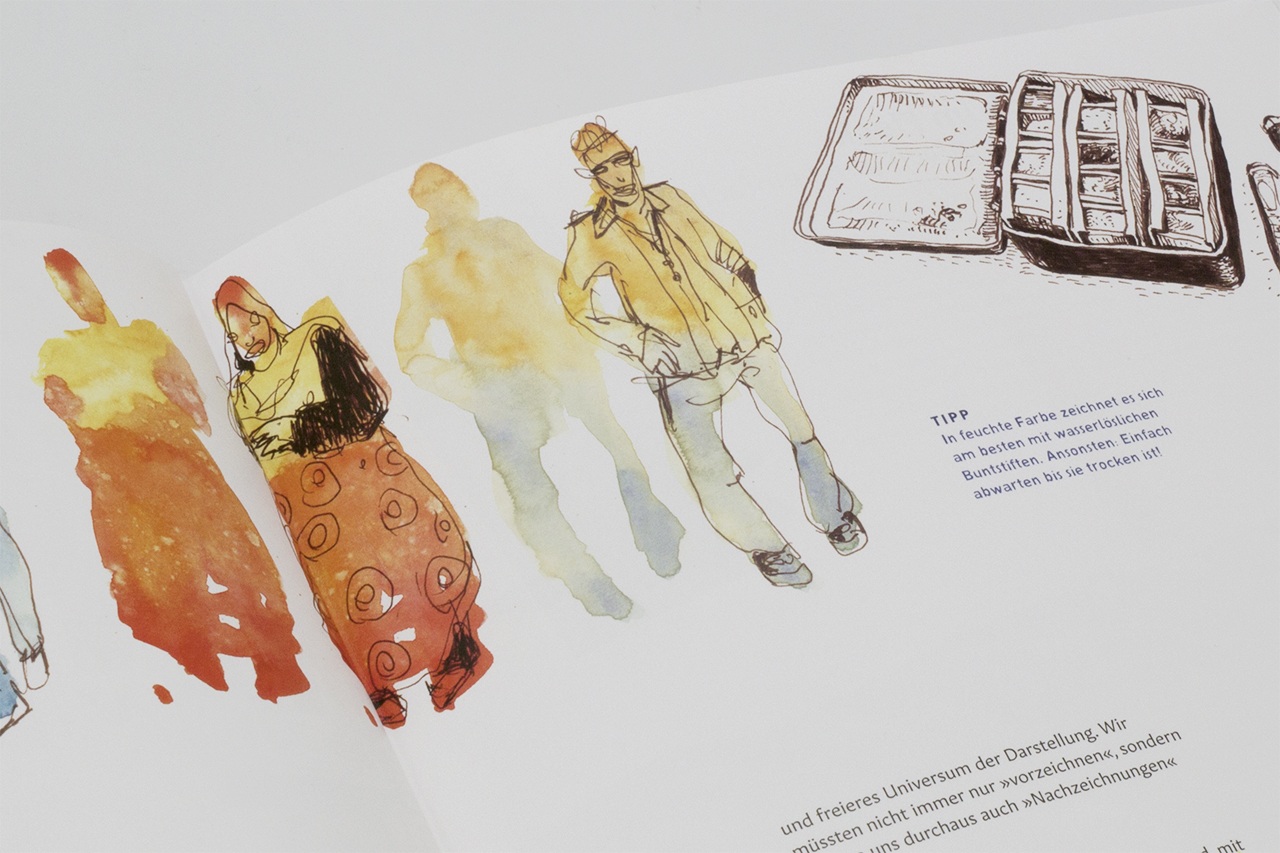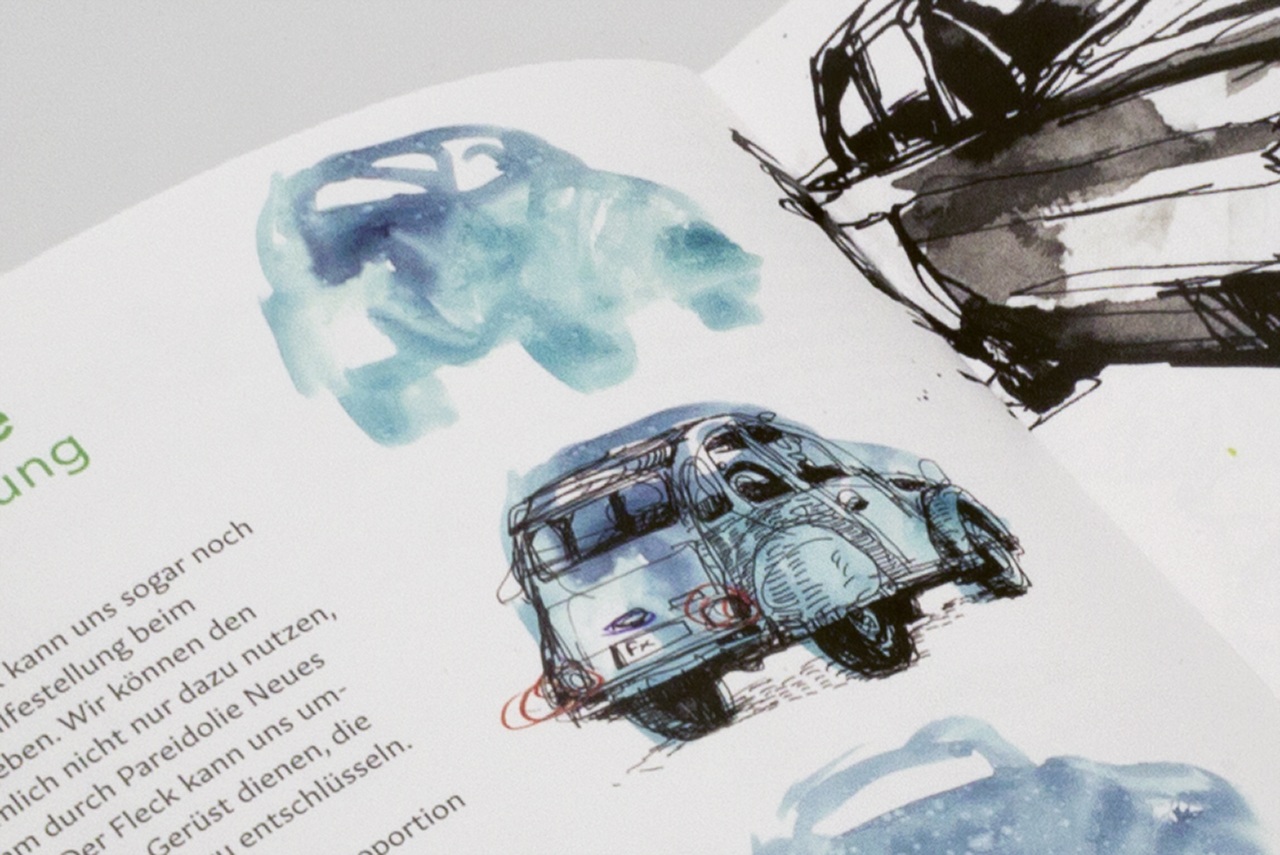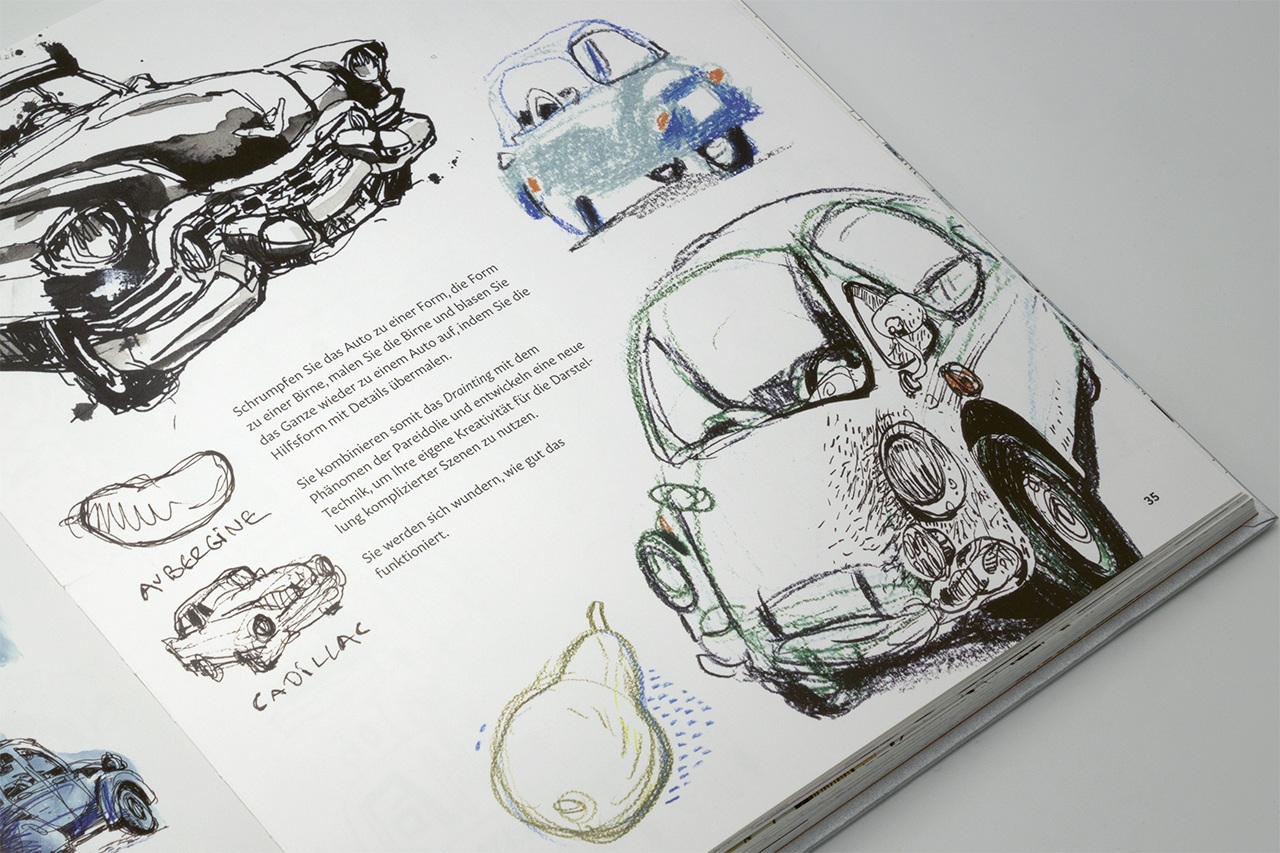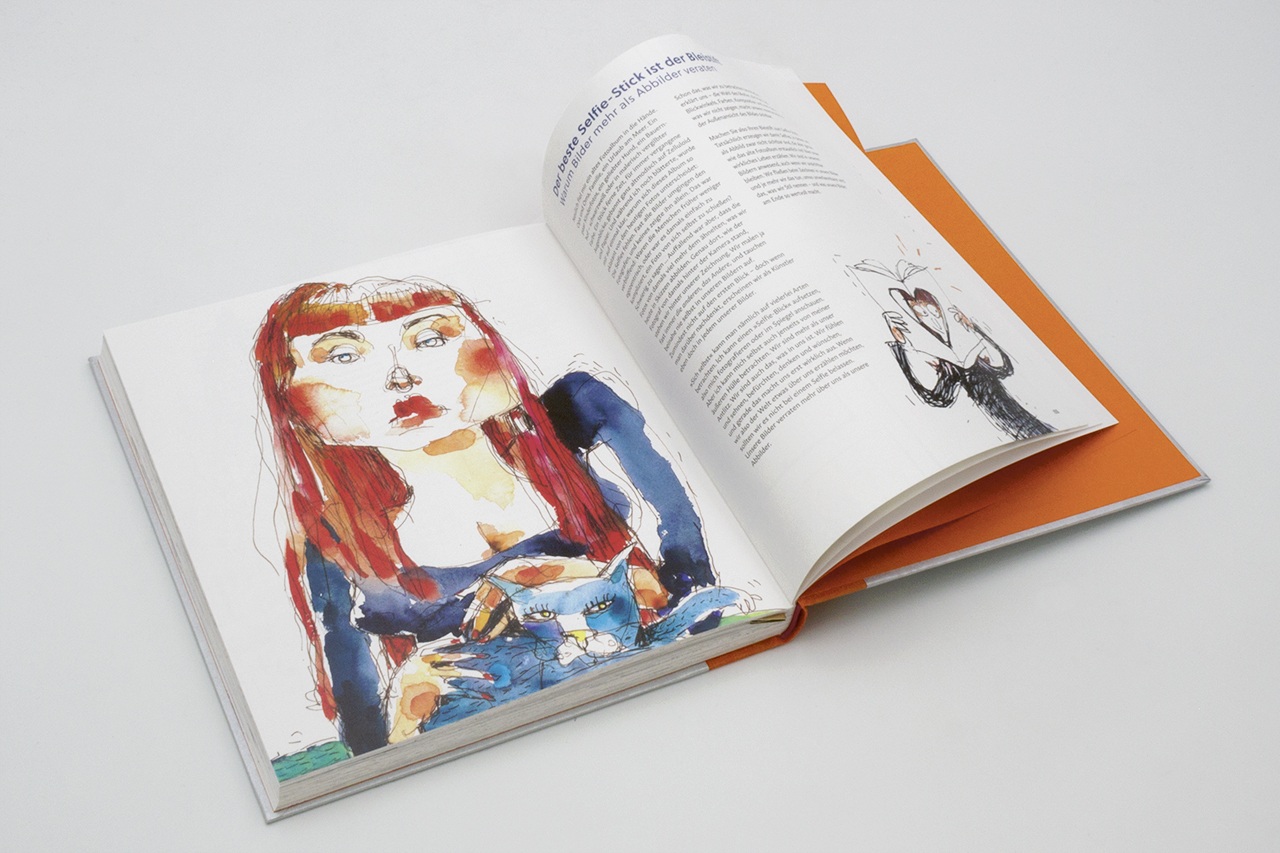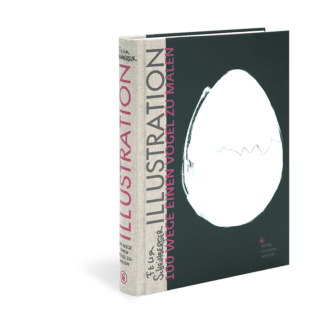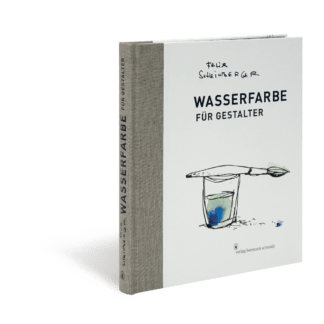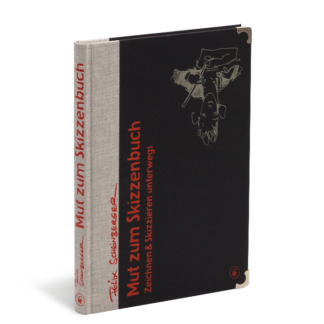Inhaltsverzeichnis
| Kapitel 1 |
Zeichnen vs. Malen |
| |
Zeichnen und Malen sind zwei grundverschiedene Dinge! |
| Kapitel 2 |
Scheidungsgründe |
| |
Woher kommt die Trennung von Malen und Zeichnen eigentlich? |
| Kapitel 3 |
Linien vs. Flächen |
| |
Die klassische Zeichnung macht es uns ganz schön schwer |
| |
Beginnen wir erst mal mit dem |
| Kapitel 4 |
Volumen |
| |
Die ersten Maler haben das (Ur-)Pferd nämlich von beiden Seiten aufgezäumt: |
| Kapitel 5 |
Der Fisch im Fleck |
| |
Fangen wir einfach ganz einfach an |
| Kapitel 6 |
» ... siehst Vater du den Erlkönig nicht?« |
| |
Warum wir in Unbekanntem Bekanntes entdecken und – warum uns diese Gabe beim Zeichnen helfen kann |
| Kapitel 7 |
Pareidolie |
| Kapitel 8 |
Der Trick mit dem Knopf |
| |
Wie man vom Fleck zum Portrait kommt |
| Kapitel 9 |
Die Silhouette |
| |
Der Weg vom Fleck zum Bild führt über die Silhouette |
| Kapitel 10 |
Eine Zwischenbemerkung zum Umgang mit Farbe |
| |
In Phasen arbeiten |
| Kapitel 11 |
Proportion ist (fast) alles ? |
| Kapitel 12 |
Von der Fläche zur Perspektive |
| |
Proportionen aus einem Fleck heraus gestalten |
| Kapitel 13 |
Wie ein Maulwurf gucken |
| |
Man hat Ihnen sicher schon mal zu erklären versucht |
| Kapitel 14 |
Das Auto und die Birne |
| |
Formen durch Vereinfachung entschlüsseln |
| Kapitel 15 |
Kontraste |
| |
Um der Silhouette Volumen zu verleihen |
| |
Wie erkennt man überhaupt |
| Kapitel 16 |
Farbige Schatten |
| |
Wie man mit Farben Dunkelheit zeichnet |
| Kapitel 17 |
Vom Fleck zur Linie |
| |
Die Form durch Blindzeichnen erfassen |
| Kapitel 18 |
Vier Finger |
| |
Priorisieren und Weglassen |
| Kapitel 19 |
Negatives Denken |
| |
Die unterschätzte Kraft des Weißraumes |
| Kapitel 20 |
Automatisches Zeichnen |
| |
Wie man lernt wieder zu zeichnen |
| Kapitel 21 |
Freund Zufall |
| |
Warum es logisch ist |
| Kapitel 22 |
Kochen und Kunst |
| |
Die klassische Zeichnung macht es uns ganz schön schwer |
| Kapitel 23 |
Klein anfangen |
| |
Leichter zum Bild durch Miniaturen |
| Kapitel 24 |
Verdichtungen |
| |
Den Betrachter durchs Bild leiten |
| Kapitel 25 |
Perspektive: klassisch |
| Kapitel 26 |
Perspektive: Klein/Groß |
| Kapitel 27 |
Perspektive: mit Drainting |
| Kapitel 28 |
Raum aus der Fläche |
| |
Perspektive malerisch vereinfachen |
| Kapitel 30 |
Davor |
| Kapitel 31 |
Schieflagen |
| |
Zur Perspektive möchte ich Ihnen noch ein Geheimnis verraten |
| Kapitel 32 |
Perspektive |
| |
Verkürzungen beeinflussen alle geometrischen Formen – nicht nur gerade Linien |
| Kapitel 33 |
Spezialfalle |
| |
Frosch- und Vogelperspektive |
| Kapitel 34 |
Der Trick mit dem Diarahmen |
| |
Motive suchen und Bildausschnitte bestimmen |
| Kapitel 35 |
Vom Großen und vom Kleinen |
| |
Spiele mit der Dimension |
| Kapitel 36 |
Ruine Eldena im Riesengebirge |
| |
Warum wir uns von der Wirklichkeit nicht vorschreiben lassen müssen |
| Kapitel 37 |
Analoger Photoshop |
| |
Der Trick mit den Fundsachen |
| |
Kompositionen mit Fundsachen simulieren |
| Kapitel 38 |
Collagen |
| |
Bilder aus Bildern generieren |
| Kapitel 39 |
Eine Lanze für die Kopie |
| |
Abschreiben tut man nicht. Das lernt man schon in der Schule |
| Kapitel 40 |
Spieglein |
| |
Die Fehler in unseren Bildern finden |
| Kapitel 41 |
Radieren |
| |
und der Trick mit dem Wasser |
| Kapitel 42 |
Matchbox-Autos |
| |
Kniffelige Motive mit Miniaturen trainieren |
| Kapitel 43 |
Kunst aufräumen |
| |
Eine der ältesten Künstlerlebenslügen lautet: Kreatives Chaos am Arbeitsplatz ist sinnvoll |
| Kapitel 44 |
Struktur |
| |
Aufräumen tut gut |
| Kapitel 45 |
Farbig vs. Bunt |
| |
Warum Farben sowohl schöpfen |
| Kapitel 46 |
Farben gezielt einsetzen |
| |
Zeichnungen durch Farbakzente beleben |
| Kapitel 47 |
Führungsfarben |
| |
Farbakzente in bunten Bildern |
| Kapitel 48 |
Nichts als die Wahrheit |
| |
Warum wir Farben einsetzen können |
| Kapitel 49 |
Nachts sind alle Katzen grau |
| |
Ohne Licht kein Schatten |
| Kapitel 50 |
Bilder beleben |
| |
Weil Städte nicht aus Stein |
| Kapitel 51 |
Von Menschen und Hunden |
| |
Von der Schwierigkeit |
| |
Der »gnadenlose« Blick zeigt sich bei Gesichtern am deutlichsten |
| Kapitel 52 |
Aktzeichnen 2.0 |
| |
Fordernde Motive durch Phantasie entschärfen |
| Kapitel 53 |
Schau mir in die Augen |
| |
Das Wichtigste an einem Portrait sind die Augen |
| Kapitel 54 |
Der Kuleschow-Effekt |
| |
Wie der Zusammenhang das Bild erschafft |
| Kapitel 55 |
Lockerheit und Virtuosität |
| |
Eigentlich möchte ich nur ein bisschen lockerer Zeichnen lernen? |
| Kapitel 56 |
Stilfragen |
| |
Warum man nichts suchen muss |
| Kapitel 57 |
Gute und schlechte Motive |
| Kapitel 58 |
Idee! |
| |
Kunst kommuniziert nicht nur mit uns |
| Kapitel 59 |
Die Mutter der guten Idee ist oft eine schlechte |
| |
Oder: Über die Notwendigkeit von mittelmäßigen Zwischenschritten |
| Kapitel 60 |
Vermeiden Sie Klischees |
| |
Auch wenn es uns nicht bewusst ist: Wir alle haben ein ganzes Archiv von Bildern im Kopf. |
| |
Warum es sinnvoll ist |
| Kapitel 61 |
Gruppendynamik |
| |
Die Bilder der Anderen. |
| Kapitel 62 |
Serien |
| |
Über den Nutzen von Wiederholungen |
| Kapitel 63 |
Gegensätze suchen |
| |
Ungleichheit birgt spannende Motive |
| Kapitel 64 |
Geduld |
| Kapitel 65 |
Sprechende Bilder |
| |
Ist Ihnen schon mal aufgefallen |
| Kapitel 66 |
Fokussieren |
| |
Warum Bilder keine Fotos sind |
| Kapitel 67 |
Zeit im Bild |
| |
Der Faktor Zeit spielt in unseren Bildern eine überraschend große Rolle |
| Kapitel 68 |
Gemalte Zeit |
| Kapitel 69 |
Über den Wert unserer Arbeit |
| |
Aus dem antiken Rom ist folgende Geschichte überliefert: |
| Kapitel 70 |
Der beste Selfie-Stick ist der Bleistift |
| |
Warum Bilder mehr als Abbilder veraten |
| Kapitel 71 |
Ein guter Grund |
| |
Ich möchte Ihnen zum Ende dieses Buches noch ein Geheimnis verraten. |
| |
Über den Autor |
The art of combining drawing and painting
Drainting is the name Felix Scheinberger has given to the intuitive combination of drawing and painting. In doing so, he has overturned the centuries-old, and totally unnecessary separation of painting areas and drawing lines, and combines the best of both worlds.
When you were a child, you picked up your paint box for painting areas, and your pencils for drawing details and lines. Intuitively and naturally. Then, you learned about the difference between »drawing « and »painting «, and this is when the difficulties began.
Where there are no outlines, they have to be found and invented abstractly. This means that you have to capture everything with the first strokes: proportion and perspective, contrast and texture, the big picture and the details. Because this is rarely successful, frustration is predetermined.
Painting and drawing become drainting!
Painting areas and drawing lines. In this order. From the approximate to the more exact. From the overall impression to the detail. Each in the technique best suited. Your pictures will become better, the thrill of making something grows, the combination of both inspires.
Be it urban sketching, sketchbook, comic, or illustration, Felix Scheinberger awakens your love of creating in short chapters with helpful impulses and valuable practical tips. And he paves a new, more accessible way to a better picture.
Felix Scheinberger knows what he is talking about!
Until the Renaissance, people had mixed the techniques intuitively. Then came a proper picture boom, frescoes were produced in job-sharing »production lines«. And the separation of the working stages was born. The sketch as preparatory work, filling in later. The pre-sketch with cheap instrument, the paints were expensive. Sometimes, habits persist until someone comes along and calls out a revolution. Then the scales fall from the eyes- and the advantages of the alliance of painting and drawing become crystal clear. The paint brings light, emotion and density to the paper. Clarity and structure come from the drawing.
Felix Scheinberger is known for his useful practical tips…
As a professor in Muenster, he passes his knowledge on successfully, and he tries out new techniques such as drainting. As an illustrator, he is in demand and booked worldwide. As an author, Felix Scheinberger is known for his useful practical tips.
In his books, everything comes together: his own relentless drawing and sketching, his intense experience in teaching and the feedback of his worldwide fan base. Drainting does not contain grey theory, but much colorful practice.
How is this book distinguishable from its »sibling titles « Dare to Keep a Sketchbook and Urban Watercolor Sketching?
The good news first: There is barely any overlapping between the titles. You can get all three of them.
Dare to Keep a Sketchbook takes you by the hand. Takes away the fear of the white page. Passes on the thrill of drawing and shows how to turn your sketchbook into your best friend and permanent companion. It is about drawing on the go and outside, about your attitude towards drawing, and also getting over inner weaknesses.
Urban Watercolor Sketching is a solid introduction to the technique of aquarelle painting. It is based on Dare to Keep A Sketchbook, and it goes far beyond Drainting in questions of watercolor.
Drainting combines the techniques, it guides you towards a good picture in the most simple and promising way.
In case you are already successfully working with Drainting, you won’t need Dare to Keep a Sketchbook, Urban Watercolor Sketching will nonetheless help you further. If you already own Urban Watercolor Sketching and Dare to Keep a Sketchbook, Drainting will still give you much new input.
We view these three books as »book siblings «: each one has its individual strengths, their parents (Felix and his creativity) are the same. The fourth Scheinberger book Illustration differs from the other three. Here, many other illustrators do not get to speak, but to illustrate. And Felix sheds a light on the economical, legal, and organizational aspects of life as an illustrator next to the techniques. It is thus rather intended for (emergent) professionals than for getting involved with creativity for the first time.
Features and design
In order to make the relation of the titles visible, we bound all four of them in half-linen. From there begins the individuality in cover material and paper, features and details. And no, not every copy of Drainting is not hand-colored by the author. He continues to do so for Urban Watercolor Sketching but that’s enough…
Drainting
The Art of Combining Drawing and Painting
160 pages with innumerable colorful images
size 21 x 24 cm
3rd edition
thread-stitched half-linen and silver cover
with fancy-linen-lined spine in bright orange and bi-colored embossing
Drainting- the new alliance of drawing and painting!
